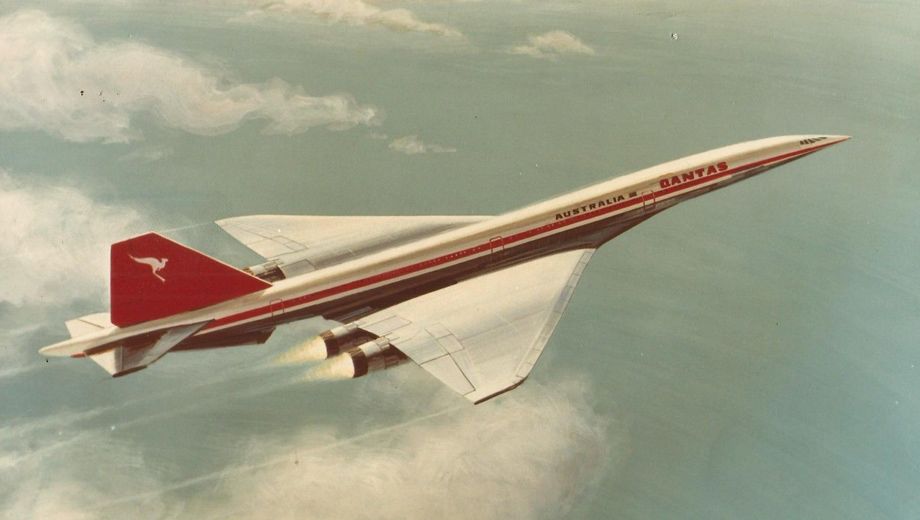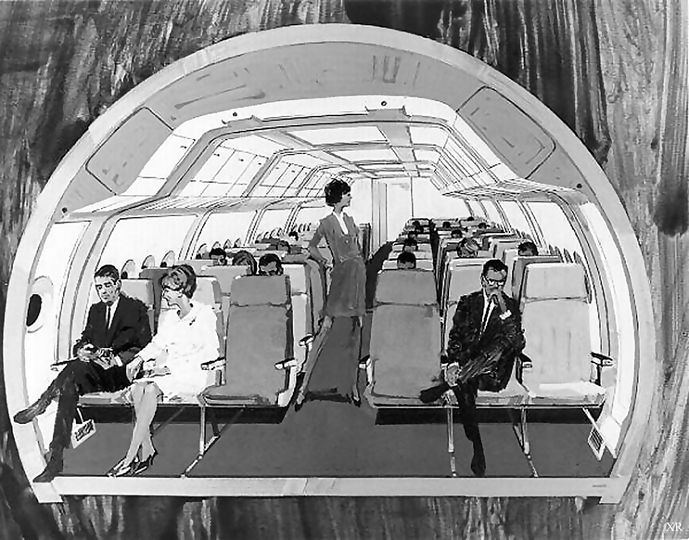Qantas’ supersonic Boeing jet would have flown to Singapore in 3 hours
Breakfast in Sydney and lunch in Singapore?

It’s the Concorde-beater which could have let you fly between Sydney and Singapore in under three hours on a supersonic Qantas jet – less time than it’d take to travel from Sydney to Perth.
And given the time difference, you’d leave Sydney, Melbourne or Brisbane after breakfast in the Qantas lounge and arrive in time for a satay and Tiger beer luncheon at Boat Quay.
The other supersonic jet
The Boeing 2707 – also known as the Supersonic Transport or SST – was a wild child of the 1960s, born from the same competitive drive which fuelled the ‘space race’ and with the Presidential imprimatur of Kennedy and Nixon.
However, this time the USA was facing just the Russians and their short-lived supersonic Tupolev, but a European challenger which resulted in the Concorde.
The Boeing 2707 – its model number chosen in a nod to the Boeing 707, which ushered in the ‘jet age’ of commercial flight – was both larger and faster than the Concorde.
The Anglo-French supersonic jet could cruise at just over Mach 2, or twice the speed of sound – some 2,160kph – while Boeing’s SST sliced through the sky at Mach 2.9, or 2,900kph.
(By way of comparison, the Airbus A380 cruises at a more sedate 900kph.)
And the Boeing 2707 carried 227 travellers with more space and comfort than Concorde’s 128 passengers.
Boeing eventually notched up some 122 delivery reservations from 26 airlines around the world, almost twice as many as the equivalent pencil-marks against the Concorde.
Like many airlines, Qantas had a foot in both camps: it ordered four Concordes and six Boeing 2707s, while Pan Am doubled down with eight Concordes and 15 Boeing SSTs.
Qantas also worked with the government to carve out several ‘supersonic flight corridors’ across Australia which could link the east coast capitals to Singapore, with a connecting BA supersonic flight to London via Bahrain.
So why didn't the Boeing 2707 take off?
Boeing faced tough questions over the SST’s economics, especially how an increase in fuel prices would hit the gas-guzzling four-engine jet.
The trend towards carrying more passengers at slower speeds and lower fares – which Boeing itself sparked with the 747 jumbo jet – saw the supersonic market shrink, at the same time as growing environmental concerns over the sonic boom and possible impacts on the ozone layer.
The Boeing 2707 program was cancelled in 1971, without even a single full-size prototype built – just a few mock-ups.
However, in the coming years visitors to the Museum of Flight in Seattle should be able to see part of a Boeing 2707 mockup – although it’s just the first 30 metres of the jet, containing the flight deck – in the company of the museum’s ex-British Airways Concorde.
Also read: Step inside British Airways' Concorde





